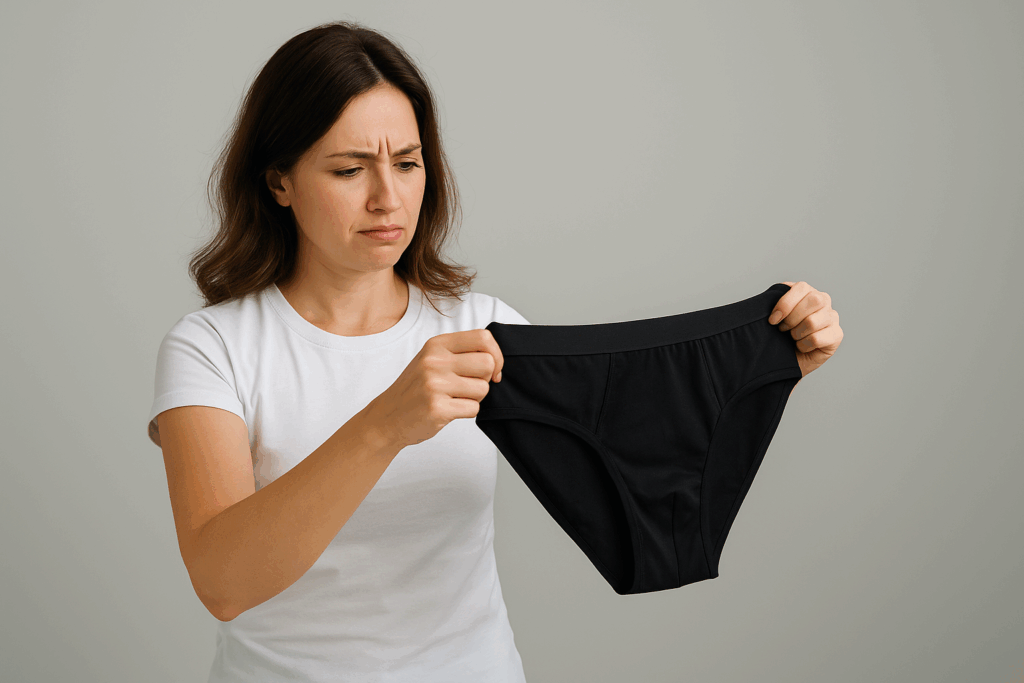Polyester underwear often sparks mixed reactions—some swear by its durability and moisture-wicking abilities, while others raise concerns about breathability or environmental impact. So, is polyester underwear really the best choice for comfort and longevity? Let’s dive deep into the fabric’s ins and outs, weigh the benefits and downsides, and give you practical tips to get the most out of polyester underwear.

Understanding What Polyester Underwear Is and How It Works
Polyester is simply a synthetic fabric made from polymer fibers—mainly derived from petroleum products. It’s a staple in the textile world thanks to its versatility, durability, and ease of care [4]. But what sets it apart in underwear specifically?
What Polyester Fabric Is and Its Common Uses in Clothing
You’re probably wearing polyester right now—over 60% of textiles worldwide contain it [4]. From athletic wear to casual clothes and even home furnishings, polyester fibers are prized for strength, wrinkle resistance, and quick drying. In underwear, these qualities translate into garments that last longer and maintain shape even after countless washes.
Its synthetic origin means it doesn’t breathe as naturally as cotton, but polyester does a great job at repelling wrinkles and stains, so your underwear stays looking fresh longer. Plus, it blends well with other fibers, adding flexibility to fabric master plans [8].
How Polyester Underwear Is Manufactured and Its Typical Features
Polyester underwear is usually made via knitting or weaving polyester yarns, sometimes with blends like spandex for extra stretch. Production uses techniques to enhance moisture-wicking capabilities, often incorporating microfibers or finishes that improve softness and durability [1].
Typical features include:
- Lightweight, smooth texture
- Resistance to shrinking and stretching
- Colorfastness—colors stay vibrant
- Quick drying, due to hydrophobic fibers
- Often enhanced with antimicrobial treatments for odor control [1]
How Polyester Differs from Other Underwear Fabrics
Unlike cotton, which absorbs moisture, polyester fibers push moisture to the surface, allowing faster evaporation. This attribute is why athletes favor polyester blends for sports underwear—it keeps skin drier and cooler under exertion [7]. But polyester’s synthetic nature sometimes makes wearers worry about trapped heat or skin irritations, unlike natural fibers that often feel gentler [3].
Alright, now that we know what polyester underwear is, let’s look at the bright side—why it’s a wardrobe staple.
Benefits of Choosing Polyester Underwear
Polyester underwear is often the unsung hero when it comes to durability and comfort under various conditions.
Why Polyester Underwear Is Known for Durability and Longevity
First off, polyester is tough. It resists abrasion and holds up to the rigors of daily wear better than many natural fabrics [4]. Polyester’s fibers absorb almost no moisture, which prevents weakening and stretching, so your underwear won’t get sloppy or lose shape quickly. This is a big plus if you want your underwear to last through many washes without fading or pilling [2].
Moreover, porcelain-like resistance to wrinkles means your underwear stays sharp-looking even post laundry [11].
How Polyester’s Moisture-Wicking and Quick-Drying Properties Enhance Comfort
Polyester’s biggest selling point is its moisture management. It pulls sweat and moisture away from the skin and dries fast, keeping you feeling fresh and reducing risk of chafing or irritation [1]. Just imagine working out in polyester briefs—your skin stays dry, and the fabric breathes better than many expect.
Studies confirm sportswear made with polyester reduces the perceived exertion during activity thanks to its thermal comfort characteristics [7]. This explains why athletes prefer polyester underwear over cotton, which tends to stay wet and uncomfortable [1].
Cost-Effectiveness and Easy Care Compared to Other Fabrics
College student on a budget? Polyester underwear makes sense. It’s generally cheaper than high-end cotton or natural blends, yet still delivers great performance [2]. On top of that, it’s low maintenance: machine washable, quick drying, and wrinkle-resistant, cutting down ironing and replacement costs.
You can toss polyester underwear in your regular wash and it bounces back well from dirt and sweat residues if cared for properly [13].
The Lightweight and Supportive Feel of Polyester Underwear, Especially During Exercise
Polyester blends can be engineered to offer excellent stretch and support without bulk. This means you get underwear that hugs just right and moves with you, making them ideal for gym sessions or everyday wear [3]. When mixed with spandex or elastane, polyester maintains shape and provides a snug, comfortable feel all day long.
Lots of brands now use microfiber polyester blends offering a barely-there sensation while still staving off sweat buildup and odor, making them a popular activewear choice [1].
Of course, polyester is not perfect. Let’s explore what you should watch out for.
Potential Downsides to Consider Before Choosing Polyester Underwear
Polyester’s synthetic nature brings certain drawbacks you shouldn’t overlook if comfort is your priority.

Addressing Breathability Limitations and Heat Retention Issues
While polyester excels at moisture management, it can sometimes trap heat due to lower breathability compared to natural fibers like cotton or bamboo [9]. This is especially noticeable in hot, humid climates or during prolonged wear without changing.
Some wearers report feeling warmer in polyester underwear, which might contribute to discomfort or excessive sweating [3]. Selecting polyester blends that enhance airflow or adding mesh panels can help, but pure polyester is often less breathable overall [9].
Understanding Possible Skin Sensitivities and Allergic Reactions to Polyester
Petroleum-based textiles like polyester can sometimes cause skin irritation or worsen existing sensitivities, especially in those prone to allergies or eczema [11]. This is often due to the fabric’s tight weave or chemical finishes used during production.
If you notice itching, redness, or rashes after switching to polyester underwear, consider hypoallergenic blends or natural fiber layers closer to the skin [3].
How Polyester Affects Odor Retention Compared to Natural Fibers
You might have that one sweater or shirt that just won’t shake the smell, no matter how many washes. Polyester is infamous for retaining odors more than natural fibers since odor-causing bacteria cling to the fabric surface in the tiny fiber grooves [1]. This can lead to persistent unpleasant smells after heavy use.
However, many manufacturers now treat polyester underwear with antimicrobial agents or silver ion coatings to reduce odor buildup without compromising breathability [1].
Environmental Concerns Linked to Polyester Production and Disposal
Let’s be honest: polyester has a big environmental footprint. Made from non-renewable petroleum, it contributes to plastic pollution as microfibers shed in washing machines end up in waterways [12]. Moreover, it doesn’t biodegrade easily, piling up in landfills.
Today, more brands are turning to recycled polyester, which lowers environmental impact but still isn’t perfect [2]. If sustainability matters to you, consider recycling programs or biodegradable options alongside polyester underwear [2].
Moving past potential issues, here’s how to make polyester underwear work best for you.
Practical Tips for Maximizing Comfort and Maintaining Polyester Underwear
Polyester can be a dream fabric if you know how to treat it right.
Selecting the Best Polyester Blends to Improve Breathability and Comfort
Rather than pure polyester, look for blends with natural fibers like cotton or lyocell. These combos improve softness and breathability while preserving polyester’s durability [9]. Adding spandex or elastane boosts flexibility and a tailored fit [1].
Some high-end underwear brands also use moisture-activated fabrics that adapt to body heat, enhancing comfort—worth trying if you want the latest in textile tech [3].
Recommended Washing and Care Practices to Extend Underwear Lifespan
To keep your polyester underwear fresh and long-lasting:
- Wash in cold water to prevent fiber damage and color fading [13]
- Use gentle detergent and avoid fabric softeners, which can clog fibers and reduce wicking ability [13]
- Turn underwear inside out before washing to protect surface finishes
- Air dry or use low heat in the dryer to maintain elasticity [13]
Regular care prevents odor buildup, keeps fabrics fluffy and comfortable, and extends usage significantly.
Simple Strategies to Prevent Odor Build-Up and Skin Irritation
To combat odor and irritation:
- Don’t wear polyester underwear for too long without washing
- Rotate your underwear regularly to give fabrics time to air out
- Consider underwear with built-in antimicrobial treatments, especially if you sweat a lot [1]
- If irritation occurs, supplement with natural fiber liners or choose high-quality polyester blends certified for skin safety [3]
Alright, now let’s see how polyester stacks up against other common underwear fabric choices.
Comparing Polyester Underwear with Other Fabric Choices to Find Your Best Option
Each fabric has its own personality—and knowing the differences helps make the best pick.
Polyester Underwear Versus Cotton: Weighing the Pros and Cons
Cotton underwear feels soft and breathable but absorbs moisture and dries slowly, which can cause dampness and chafing [3]. Conversely, polyester wicks moisture away and dries fast—winner for active or long days [1]. Cotton may be kinder to sensitive skin, though polyester blends with natural fibers provide a balanced compromise [9].
Cost-wise, polyester usually comes cheaper and lasts longer through washes, but cotton is renewable and biodegradable [12].
How Polyester Compares to Nylon and Other Synthetics in Performance and Feel
Nylon shares polyester’s lightweight, durable traits but tends to feel silkier and can retain less odor. Polyester generally better withstands heat and UV exposure, so it’s ideal for sports underwear [1]. Both fabrics perform well in blends, but some prefer nylon’s smooth touch while others favor polyester’s moisture control [7].
Identifying When Polyester Underwear Is the Most Suitable Choice Based on Lifestyle and Needs
If you’re active—running, gym workouts, hiking—polyester underwear is the way to go. It keeps you dry, shaped up, and odor in check. Busy folks who want low-maintenance, affordable underwear also benefit from polyester’s easy care and durability.
However, if you have extremely sensitive skin or prefer natural fibers for environmental reasons, cotton or blends might be better daily choices—but polyester hybrid underwear still offer a practical, all-around performance boost [3][9].
